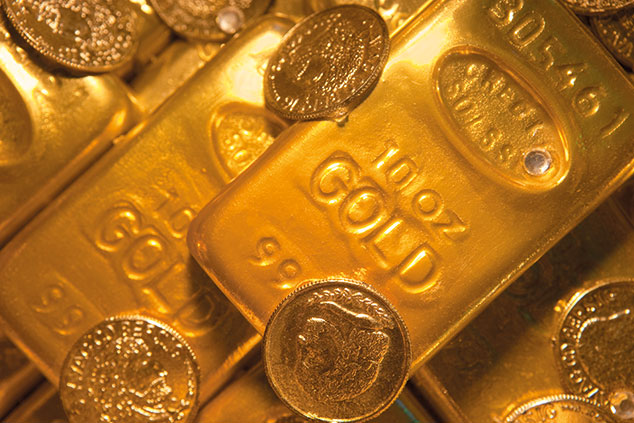
As a result, however, gold looks “inexpensive”. This may prove a good time to top up your holdings in this out-of-favour asset class. Investors should hold 5%-10% of their portfolio in gold.
Hedge against higher prices
For one thing, inflation is beginning to pick up around the world. The yellow metal has served as hedge against inflation eroding the value of stocks and bonds. “Gold was $20.67 an ounce 100 years ago and that bought a good men’s suit,” as Bary points out. “At $1,200 an ounce, the same is true today.”
It has also done well in times of crisis – used as a safe haven for centuries, it’s an asset that tends to thrive on bad news. Gold rallied by 17% in the six months after Lehman Brothers collapsed – a time period when the S&P 500 fell by more than 40%.
Gold is rare – all the gold mined in the world would fit into two Olympic-sized swimming pools – and that makes it valuable. Annual new mined supply adds less than 2% to the global total, so it’s not easy to boost supplies of gold quickly. With paper money, on the other hand, the printing presses can produce more in minutes. That’s why “people have historically viewed [gold] as a hedge against government depreciation of local currency”, Keith Trauner of the GoodHaven fund management group told Barron’s.
Cryptocurrencies have been touted as an alternative to gold, as it is also expensive to mine more of them. But bitcoin, which dropped 55% this year, remains highly volatile, and it’s still very difficult to trade. According to some, meanwhile, gold’s role in protecting against inflation may have been overstated. “If you strip out the 1970s, you find the relationship between gold and inflation is quite weak,” Brian Lucey, professor of international finance at Trinity College Dublin, told Reuters.
“That is because you have a very different inflation regime in the late 1980s and 1990s than you had in the 1970s.” Back then, double-digit inflation was the norm. “We’re not going back to that.”
But prices are set to rise as labour markets tighten, and central banks are poor at containing inflation. There are also still plenty of investors scarred by the 1970s, which bodes well for demand. This week’s big gold merger (see page 9) should also spur interest. Time to stock up.